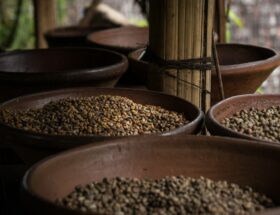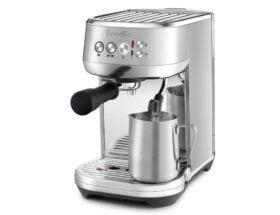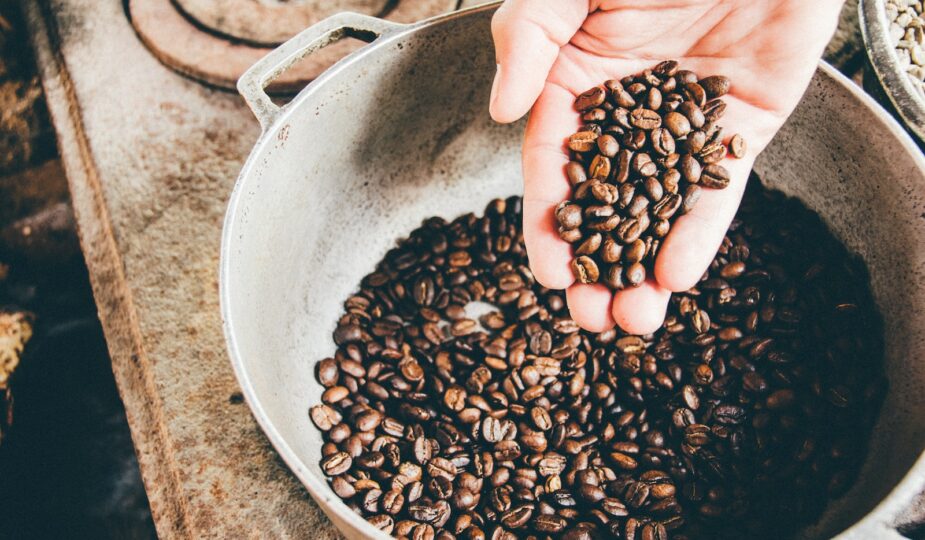
The Science of Coffee Roasting: How Temperature and Time Impact Flavor
Welcome to the world of coffee roasting, where science and artistry converge to create that perfect cup of joe. Coffee aficionados understand that the flavor, aroma, and character of your daily brew are the result of a delicate dance between temperature and time. In this exploration of the coffee roasting process, we delve into the intricacies of turning green coffee beans into your favorite morning elixir.
When we talk about coffee roasting, we’re not just discussing a simple culinary task; it’s a scientific endeavor that involves precise control over two key elements: temperature and time. Roasting coffee beans is akin to conducting a chemistry experiment within the confines of a roaster. The process triggers a series of chemical reactions, with the Maillard reaction and caramelization playing starring roles in flavor development.
Table of Contents
- The Coffee Roasting Process
- The Role of Temperature in Coffee Roasting
- The Influence of Time in Coffee Roasting
- Flavor Profiling in Coffee Roasting
- Making the Perfect Cup of Coffee
- Storing and Preserving Coffee
- Coffee Roasting and Brewing: The Final Flavor Frontier
- Conclusion: Savoring the Complexities of Coffee Roasting
The Coffee Roasting Process
In the world of coffee, roasting is the transformative magic that turns ordinary green coffee beans into the flavorful, aromatic brew we all adore. This process is the heart and soul of coffee production, where science and craftsmanship unite. To understand the art of coffee roasting, we must explore the intricate journey these beans embark upon.
The Green Coffee Beans
Everything begins with the green coffee beans, which are the raw, unroasted seeds of the coffee plant. These beans are like nature’s treasure chest, harboring a myriad of chemical compounds and flavors waiting to be unlocked. The beans’ origin, altitude, and variety contribute to their unique potential.
The beans are stored and shipped in their green state to preserve their freshness. They remain firm, green, and tasteless until the roasting process commences.
Heat, Time, and Chemistry
The essence of coffee roasting revolves around the careful orchestration of two fundamental elements: heat and time. These variables dictate the development of flavors and aromas in the beans. The Maillard reaction and caramelization are key chemical reactions that occur during roasting, bringing forth the rich, complex flavors we associate with coffee.
As the green coffee beans are subjected to heat, they undergo a series of transformations. First, they turn yellow as moisture is driven out. Then, they enter a stage known as the “first crack,” where they audibly pop due to the rapid expansion of internal gases. The beans are now light roast coffee.
Continuing the roast leads to darker shades as the beans absorb more heat. The second crack signifies the transition to medium or dark roast levels. The longer the roasting time and higher the temperature, the deeper the beans’ flavors and aromas develop.
Roast Levels
Understanding coffee roast levels is pivotal for both coffee roasters and consumers. Each roast level, from light to dark, offers a distinct flavor profile. Light roasts retain more of the beans’ origin characteristics and often have a bright acidity. Medium roasts balance origin notes with roast flavors, while dark roasts carry the bold, smoky, and caramelized undertones.
The Cooling Process
Once the beans reach the desired roast level, they are immediately cooled to halt the roasting process. This is a critical step, as overroasting can lead to a burnt or bitter taste. Cooling rapidly preserves the beans’ flavors and prevents further chemical reactions.
And there you have it, a brief overview of the coffee roasting process. As we venture deeper into the realms of coffee science, we’ll explore the intricate interplay between temperature and time and the alchemical magic they work on these humble green beans.
| Roast Level | Temperature Range | Roasting Time | Flavor Characteristics |
|---|---|---|---|
| Light Roast | 350°F – 400°F (177°C – 204°C) | 8 – 10 minutes | Bright, floral, citrus, tea-like notes |
| Medium Roast | 400°F – 430°F (204°C – 221°C) | 10 – 12 minutes | Balanced, nutty, fruity, caramel |
| Medium-Dark Roast | 430°F – 450°F (221°C – 232°C) | 12 – 14 minutes | Rich, chocolate, toasty, slight acidity |
| Dark Roast | 450°F+ (232°C+) | 14+ minutes | Bold, smoky, bitter, full-bodied |
The Role of Temperature in Coffee Roasting
Temperature is the maestro that conducts the symphony of flavors in coffee roasting. Precisely controlling temperature during this process is an art that separates mediocre roasts from exquisite ones. Let’s delve into the pivotal role that temperature plays in crafting the perfect coffee.
Initial Temperature: Green Bean Entry
As the green coffee beans enter the roaster, they are at room temperature, typically around 70°F (21°C). The roasting begins with a gradual increase in temperature. This initial phase is called the drying stage. The beans undergo a series of chemical reactions as moisture evaporates. This stage sets the foundation for the flavors that will develop later.
During the drying stage, the roaster aims to raise the temperature at a controlled pace to avoid scorching the beans or stalling the process. This phase usually lasts for a few minutes.
Development of Roast Profiles
Roasters work with profiles, which are detailed plans for the temperature trajectory over the entire roast. These profiles are meticulously designed to bring out the desired flavor characteristics in the beans. Temperature fluctuations, timings, and intensity are adjusted to achieve specific outcomes.
For example, a light roast profile might involve a slow and steady increase in temperature during the drying stage, followed by a more rapid climb to achieve first crack. In contrast, a dark roast profile may emphasize a longer time at high temperatures to develop smoky, bitter-sweet notes.
First and Second Crack
Temperature plays a critical role in the timing of the first and second cracks. The first crack occurs at around 380°F (193°C) when the beans expand and release steam, creating an audible crack. The second crack, typically around 430°F (221°C), signals the beginning of a darker roast level.
Controlling the temperature during and after the first crack determines the roast level. If the temperature is reduced at this point, a medium roast can be achieved. Allowing the temperature to climb further results in a darker roast level.
Cooling and Final Temperature
After reaching the desired roast level, cooling the beans promptly is crucial. Coffee beans are delicate, and if left too long in the roaster, they can overcook. The final roast temperature depends on the desired roast level. A lighter roast typically reaches temperatures of 400-415°F (204-213°C), while darker roasts may go beyond 440°F (227°C).
Temperature control is an intricate dance that master roasters perform, utilizing the science of heat to craft the art of flavor. In our journey to understand coffee roasting, we can’t overlook the role of time. Let’s explore the interplay of time and temperature in the next section.
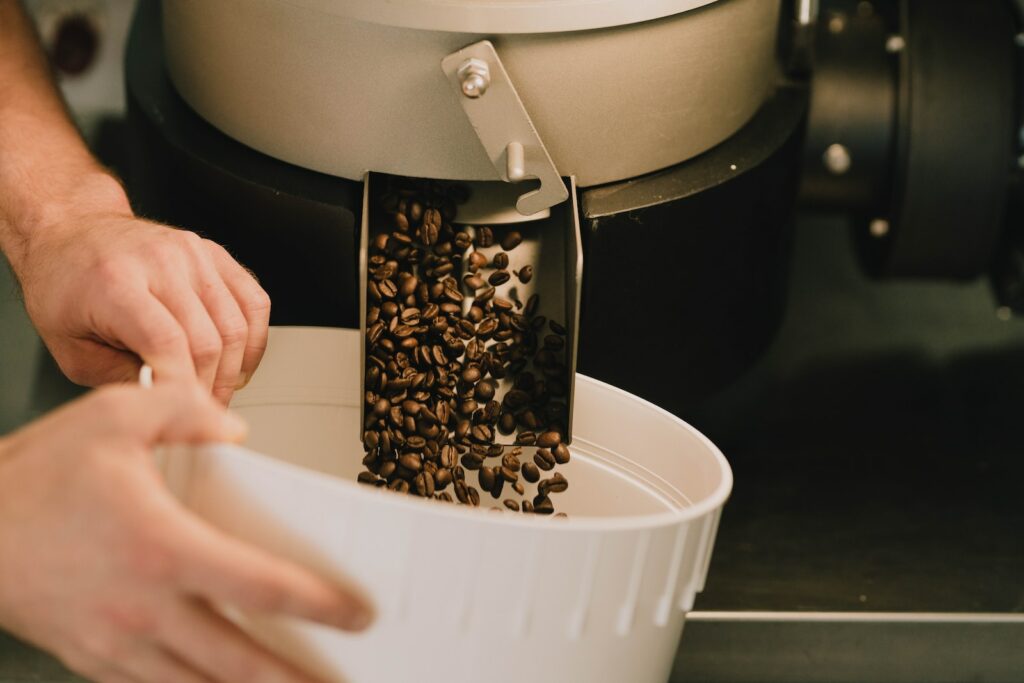
The Influence of Time in Coffee Roasting
Time, the second half of the coffee roasting equation, is as pivotal as temperature in determining the flavor of your morning brew. In this section, we’ll dive into the intricacies of how time impacts the coffee roasting process and explore its relationship with temperature.
Time and Flavor Development
The duration of the roasting process significantly influences the flavor profile of the coffee. Shortening or extending the roast time can lead to entirely different taste experiences. In the early stages, during the drying phase, time is crucial for setting the foundation of flavor. Longer drying times can lead to subtle, delicate flavors, while shorter times may produce a brighter, more acidic cup.
As roasting progresses, time becomes a defining factor in achieving specific roast levels. It dictates the transition from a light to dark roast. The interval between the first and second crack is a critical period that impacts roast development. A longer gap allows for a medium roast, while a shorter gap leads to a darker roast.
The Maillard Reaction
The Maillard reaction, a complex chemical process that contributes to the roasted flavor, is highly dependent on time. This reaction occurs between amino acids and reducing sugars when exposed to heat. The longer the beans are roasted, the more pronounced the Maillard reaction becomes. It’s responsible for creating a range of delightful flavors, from caramel to chocolate notes.
Roasters often use the Maillard reaction as a tool to fine-tune the flavor of their coffee. By adjusting the time the beans spend in specific temperature ranges, they can enhance particular flavor notes and create unique, memorable blends.
The Sweet Spot: Finding the Perfect Roast Time
Roasters strive to find the “sweet spot” for each coffee bean, which is the ideal balance of time and temperature. Achieving this balance is the key to unlocking the bean’s full flavor potential. It’s a blend of science and art that involves experimentation and precise control.
Factors like bean origin, altitude, and moisture content all play a role in determining the sweet spot. Understanding the specific requirements of each coffee variety is essential to master the art of time in coffee roasting.
As we’ve seen, time and temperature are inextricably linked in the coffee roasting process. Together, they give rise to a symphony of flavors, with roasters as the conductors, guiding the beans through this intricate dance of heat and time.
Now that we’ve explored the significance of both temperature and time, it’s time to discover how these variables affect the coffee’s final flavor. In the next section, we’ll delve into the intricate world of flavor profiling and the magic of the perfect roast.
Flavor Profiling in Coffee Roasting
Roasting coffee beans is a meticulous art, and achieving the perfect flavor profile is the ultimate goal of every roaster. In this section, we’ll explore how temperature and time come together to craft the unique taste experiences that coffee enthusiasts savor.
Temperature’s Role in Flavor Profiling
The temperature at which coffee beans are roasted has a profound impact on their flavor profile. Whether it’s the bright acidity of a light roast or the deep, chocolatey notes of a dark roast, temperature plays a pivotal role. Light roasts, typically roasted at lower temperatures, retain more of the bean’s original characteristics, offering floral, fruity, and bright notes.
Medium roasts strike a balance, preserving some of the bean’s inherent qualities while introducing caramel sweetness and a fuller body. Dark roasts, roasted at higher temperatures, bring out smoky, bittersweet, and bold flavors with a robust body. It’s the skilled control of temperature that allows roasters to fine-tune the coffee’s flavor to match their desired profile.
Time as a Flavor Profiling Tool
Time complements temperature in shaping flavor profiles. Roasters manipulate the roast time to emphasize specific flavor characteristics. For instance, a shorter roast time can enhance the coffee’s acidity and floral notes, while a longer roast time can accentuate body and deepen the flavor. The balance between time and temperature varies with each bean, and it’s the roaster’s expertise that ensures the perfect harmony.
The Art of Blending
Roasters often go beyond single-origin beans to create signature blends. Blending different beans, each roasted to its optimal flavor profile, allows roasters to craft unique taste experiences. They carefully select beans with complementary flavor characteristics and roast them to perfection. The result is a harmonious blend that offers a balance of acidity, body, and distinctive tasting notes.
Crafting the Perfect Cup
As a coffee enthusiast, understanding the science behind flavor profiling can elevate your coffee experience. Experimenting with different roast levels and blends can help you discover the flavors that delight your palate the most. Whether you prefer the zesty vibrancy of a light roast or the bold richness of a dark roast, the world of coffee offers a myriad of options to explore.
Now that we’ve explored the technical aspects of coffee roasting, from temperature and time to flavor profiling, you’re well on your way to becoming a coffee connoisseur. In the final section of this article, we’ll discuss the impact of these factors on your daily brew and how to make the perfect cup of coffee at home.
| Coffee Bean Origin | Flavor Profile | Acidity | Body |
|---|---|---|---|
| Kenya | Bright and fruity | High | Light to medium |
| Colombia | Balanced, nutty, and fruity | Medium | Medium |
| Ethiopia | Floral and tea-like notes | High | Light |
| Brazil | Nutty and chocolatey | Low | Medium to full |
Making the Perfect Cup of Coffee
Now that we’ve explored the intricacies of coffee roasting, it’s time to bring that knowledge into your daily coffee ritual. Making the perfect cup of coffee requires attention to detail and a few simple yet crucial steps. In this section, we’ll guide you through the process of brewing a delightful cup of coffee at home.
Start with Freshly Roasted Beans
The foundation of a great cup of coffee is high-quality, freshly roasted beans. Seek out local roasters or reputable online suppliers who offer freshly roasted coffee. Beans that have been recently roasted and ground just before brewing will preserve the flavors developed during the roasting process.
Choose the Right Grind Size
The grind size of your coffee grounds plays a significant role in the brewing process. For most brewing methods, a medium grind is the ideal choice. However, adjust the grind to match your preferred brewing method. Coarser grinds are typically used for French press, while finer grinds work well for espresso.
Measure the Coffee and Water
Precision matters when it comes to brewing. A general guideline is to use one to two tablespoons of coffee per six ounces of water, but feel free to adjust to your taste. Investing in a kitchen scale can help ensure accuracy for a consistent brew every time.
Optimize Water Temperature
The water temperature should be between 195°F to 205°F (90°C to 96°C). This temperature range is optimal for extracting the full spectrum of flavors from your coffee. Use a simple kitchen thermometer to ensure your water is within this range before brewing.
Brewing Methods
Various brewing methods are available, such as drip brewing, pour-over, French press, espresso, and more. Each method has its unique characteristics and flavor outcomes. Experiment with different methods to find the one that suits your taste preferences best.
Experiment and Enjoy
Finally, making the perfect cup of coffee at home is a journey of experimentation and discovery. Don’t be afraid to try different beans, grind sizes, and brewing methods. Taste is subjective, and the joy of coffee lies in the diversity of flavors that you can explore.
With the knowledge of coffee roasting’s scientific intricacies and the brewing tips provided in this section, you’re equipped to embark on a delightful coffee adventure. Remember, the perfect cup of coffee is the one that satisfies your unique palate. Now, go ahead and savor the flavors of your freshly brewed coffee.

Storing and Preserving Coffee
Properly storing coffee is crucial for maintaining its freshness and flavor. The journey of coffee doesn’t end after roasting; it continues every day until you brew your next cup. In this section, we’ll delve into the art of storing and preserving coffee to ensure your beans or grounds remain at their best for as long as possible.
The Enemies of Coffee Freshness
Coffee is sensitive to several factors that can lead to degradation in flavor and aroma. The main enemies of coffee freshness include air, moisture, light, and heat. To preserve the quality of your coffee, protect it from these elements.
Invest in Quality Coffee Storage
First and foremost, select a suitable coffee storage container. An airtight container, ideally with a one-way valve to release the gas emitted by freshly roasted coffee, is essential. Make sure it’s opaque or UV-protected to shield your coffee from light. Glass, ceramic, or stainless steel containers are good choices, as they won’t impart unwanted flavors or react with the coffee.
Store Whole Beans, If Possible
Whole coffee beans retain their freshness longer than pre-ground coffee. If you have the option, purchase whole beans and grind them just before brewing. This minimizes the surface area exposed to air and preserves the volatile compounds responsible for the coffee’s aroma and flavor.
Avoid Refrigeration and Freezing
While it may seem like a logical choice, both refrigeration and freezing can harm your coffee. These environments introduce moisture and cause coffee to absorb odors from other items in your fridge or freezer. It’s best to store your coffee at room temperature in a cool, dry place.
Consume Coffee Within Its Peak Window
Coffee is at its best within a few weeks of the roast date. As coffee ages, it slowly loses its flavor and aroma. Try to buy and consume your coffee within this window to experience the full spectrum of flavors developed during roasting.
Plan Your Purchases Wisely
Finally, plan your coffee purchases according to your consumption habits. It’s better to buy smaller quantities of fresh coffee more frequently than to stock up on a large supply. This way, you can always enjoy the freshest coffee possible.
By understanding the importance of proper coffee storage and following these guidelines, you can extend the life of your coffee’s freshness and savor its unique flavors longer. Remember that coffee is a perishable product, and preserving its quality is part of the journey in appreciating this beloved beverage.
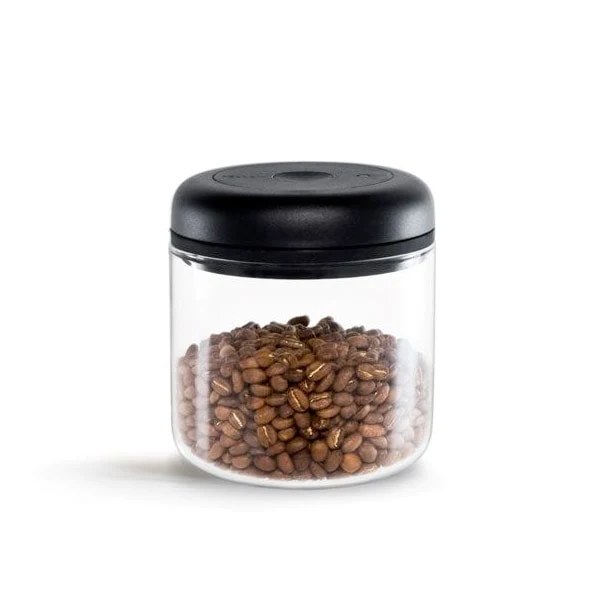
Coffee Roasting and Brewing: The Final Flavor Frontier
As we’ve explored the intricate science of coffee roasting and its influence on flavor throughout this article, it’s crucial to remember that the ultimate moment of flavor revelation occurs during brewing. In this section, we will dive into the last phase of the coffee journey, highlighting the significant impact of the brewing process on your daily cup.
The Interplay of Roasting and Brewing
Your choice of roast level and bean type significantly affects the brewing process and the flavors in your cup. Lighter roasts typically require a shorter brewing time, resulting in brighter, more acidic notes. On the other hand, darker roasts may need a longer extraction time to balance the inherent bitterness with rich, roasted flavors.
Grind Size Matters
The grind size of your coffee beans plays a crucial role in the brewing process. Different brewing methods, such as pour-over, French press, espresso, or AeroPress, demand specific grind sizes. Generally, a finer grind is suitable for espresso, while a coarser grind is better for French press brewing. Experimenting with grind size allows you to fine-tune the extraction process and control the flavors in your cup.
Water Temperature and Quality
The temperature and quality of water used in brewing are often underestimated but equally important. Using water that’s too hot can lead to over-extraction and bitterness, while water that’s too cold may result in under-extraction and weak flavors. Using filtered water at an ideal temperature, typically between 195°F to 205°F (90°C to 96°C), ensures optimal extraction of flavors from your coffee grounds.
Brewing Time and Techniques
Adjusting brewing time and techniques is the final frontier for enhancing your coffee’s flavor. Experiment with the steeping time, infusion methods, and agitation techniques to achieve the desired taste profile. For instance, a shorter brewing time may yield a milder cup, while a longer extraction time can result in bolder, more intense flavors.
The Art of Coffee Brewing
Understanding the interplay of coffee roasting and brewing and the influence of grind size, water quality, and brewing time is a true art. It requires experimentation, patience, and a willingness to adjust variables to suit your palate. Your ideal cup of coffee is a personal journey, and mastering the brewing process is the final step toward coffee nirvana.
By mastering the coffee roasting and brewing process, you can unlock a world of flavors and aromas. Your cup of coffee becomes a canvas, and you are the artist, crafting a masterpiece with every brew. The journey from green beans to a perfect cup is a testament to the science and artistry that make coffee a beloved ritual for millions around the world.
Conclusion: Savoring the Complexities of Coffee Roasting
In the world of coffee, where every sip is a symphony of flavors and aromas, understanding the intricate dance between temperature, time, and bean has given us an appreciation of the art and science of coffee roasting. Throughout this exploration, we’ve witnessed how each step in the process, from green bean to roasted perfection, contributes to the rich tapestry of coffee flavors.
The heart of coffee roasting lies in the meticulous control of temperature and time. These variables shape the chemical reactions within the beans, coaxing out distinct notes that tantalize our taste buds. Light roasts reveal the bright, lively tones of fruit and florals, while dark roasts offer deep, robust undertones of chocolate and spices.
Roast profiles, bean origins, and the ever-innovative world of coffee are constantly expanding the horizon of possibilities. With a deeper understanding of these elements, you can select the perfect roast and brewing method to create your personal coffee masterpiece.
As you embark on your journey into the world of coffee roasting, remember that your taste buds are the ultimate judges. Experiment, savor, and refine your coffee experience. The science behind roasting is a guiding light, but your senses and passion are the true drivers of discovery. So, brew, sip, and embrace the complexities of coffee roasting, one exquisite cup at a time.


